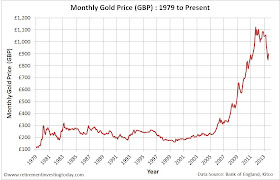The Office for National Statistics Wealth and Assets Survey, published on the 12 July 2012, tells us that the total Wealth (including private pension wealth but excluding state pension wealth) of all private households in Great Britain was £10.3 trillion. That’s £373,000 of wealth for the Average Household and even if we switch to Median values, to try and remove some of the extreme Wealth held by the 1%, it’s still £210,000, making the debt seem a little less serious on the average (I acknowledge that the poorest probably have no wealth and a lot of debt with the richest having lots of wealth and little debt but that’s for another day). 32.9% of this wealth is Net Property Wealth which is the value of the property held minus the value of mortgage liabilities and equity release. Not everyone is lucky enough to own a property but for those that do the Average Net Property Wealth is £195,000 and the Median is £148,000.
With so much Wealth tied up in Property it’s no wonder I still hear and read of people using the My House is My Pension statement. This is in my humble opinion is a statement from someone who really hasn’t quite understood how they have generated all that housing Wealth they now possess. Have they really stopped to understand how with average earnings of £474 per week and a property Compound Annual Growth Rate of 5.4% since January 1995 (Land Registry data) so much Wealth has been generated by property. There are of course a number of ways this has occurred including the more obvious time in the market and riding the rapid rise in property values between the mid 90’s and 2007 but there is also another method that all those with a mortgage are employing which I don’t think the vast majority even understand. This is Leverage or Gearing which is a financial technique used to increase gains or losses by giving the investor the return on a larger capital base than the investment personally made by the investor. In home owning speak the investment is the house deposit and the capital base is the purchase price of the house. The leverage is achieved by taking on a mortgage.





















